This article needs additional citations for verification .(June 2019) |


Milton William Hopkins (1 August 1789 - 24 April 1844) was an American portrait painter in the folk art tradition.
This article needs additional citations for verification .(June 2019) |


Milton William Hopkins (1 August 1789 - 24 April 1844) was an American portrait painter in the folk art tradition.
He was born in Harwinton, Connecticut, one of the eight children of Hezekiah and Eunice Hopkins. In 1800, when he was eleven, the family moved to Clinton, New York, but by 1807 he was back in Connecticut, where he married Abigail Pollard of Guilford, with whom he had a son. She died in 1817. He then married Almira Adkins (1794-1861) and moved to Evans Mills, New York. [1] They eventually had nine children, of whom five survived to maturity. During this time, it appears that he was primarily occupied in farming.
In 1823, he and his family moved to Newport, New York. The following year, he placed an advertisement in that city's newspaper (the Patriot) offering his services in house and sign painting, gilding, glazing and chair-making. He also sold painting supplies and apparently served for a brief period as a captain on a canal boat. Soon, however, he appeared in Richmond, Virginia, where he promoted himself as an instructor for women in theorem stencil, popularly known as "Poonah painting". [1] It is likely that he was also employed as an assistant at a local women's art academy that taught painting on velvet and other fancy work.
He returned to New York in 1829. Four years later, he advertised himself as an art teacher and portrait painter. His first known work, a portrait of an unidentified man, dates from that year. Although it has not been firmly established, he may have been acquainted with, and possibly took some lessons from Ammi Phillips, an itinerant portrait painter who was from the same part of Connecticut. [2]
He moved to Ohio in 1836; first to Cleveland, then to Williamsburg near Cincinnati, where he purchased a farm. Soon after, he was apparently exposed to Academic style portrait painting and his faces became more detailed. An advertisement in the Daily Ohio Statesman from 1839 indicates that he had a studio in Columbus, but a few years later he was evidently working in the South; notably in Mississippi. He was strongly opposed to slavery, so this may have been connected to his work with the Underground Railroad. He was also involved in the Temperance Movement and the Anti-Masonic Party, although he had once been a Mason himself. [1] In addition to his self-promotion, he made many professional contacts through his active participation in the Presbyterian Church.
His last signed work dates from 1841. He was back in Cincinnati by 1843 and once again began advertising his services. He died there of pneumonia the following year. His works are occasionally confused with those of Noah North, who worked in some of the same areas and may have been apprenticed to Hopkins at some point. [3]
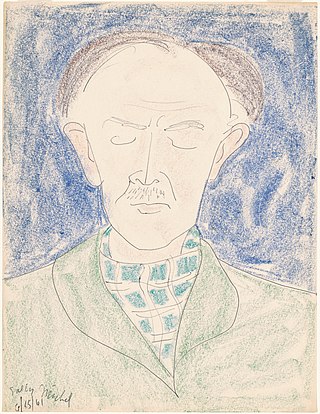
Milton Clark Avery was an American modern painter. Born in Altmar, New York, he moved to Connecticut in 1898 and later to New York City. He was the husband of artist Sally Michel Avery and the father of artist March Avery.
Joshua Johnson was an American painter from the Baltimore, Maryland area of African and European ancestry. Johnson is known for his naïve paintings of prominent Maryland residents.
Daniel E. Greene PSA, NA, AWS was an American artist who worked in the media of pastels and oil painting. The Encyclopædia Britannica considered Mr. Greene the foremost pastelist in the United States. His paintings and pastels are in over 700 public and private collections in the United States and abroad. Highly regarded as a portrait artist, his subjects have included leaders of Government, Banking, Education and Industry. Some of his sitters include First Lady Eleanor Roosevelt, Ayn Rand, Astronaut Walter Schirra, William Randolph Hearst, “Wendy’s” founder Dave Thomas, Commentator Rush Limbaugh, Composer Alan Menken, Bryant Gumbel and Bob Schieffer of CBS TV. Governmental Portraits include Secretary of Agriculture Ann Veneman, Governor Paul Laxalt of Nevada, Governor Gerald Baliles of Virginia, Governor Benjamin Cayetano of Hawaii, and Governor Fob James of Alabama. Business sitters include the chairmen of the boards of Honeywell, Coca-Cola Company, Dupont Corporation, Endo Pharmaceuticals, American Express, The New York Stock Exchange and IBM. Mr. Greene has also painted the Deans, Presidents and Benefactors of Hobart & William Smith Colleges, Tufts, Duke, Columbia, North Carolina, West Point, Delaware, Penn State, New York, Princeton, Rutgers, Yale and Harvard Universities.
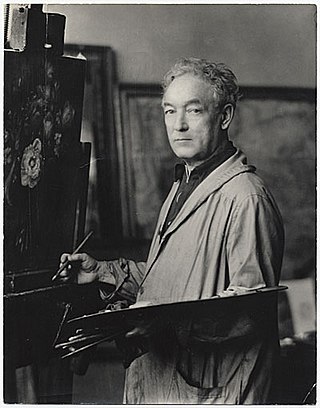
William James Glackens was an American realist painter and one of the founders of the Ashcan School, which rejected the formal boundaries of artistic beauty laid down by the conservative National Academy of Design. He is also known for his work in helping Albert C. Barnes to acquire the European paintings that form the nucleus of the famed Barnes Foundation in Philadelphia. His dark-hued, vibrantly painted street scenes and depictions of daily life in pre-WW I New York and Paris first established his reputation as a major artist. His later work was brighter in tone and showed the strong influence of Renoir. During much of his career as a painter, Glackens also worked as an illustrator for newspapers and magazines in Philadelphia and New York City.
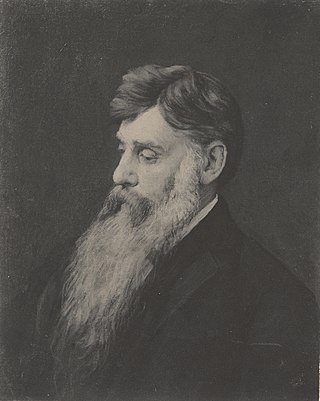
Alexander Helwig Wyant was an American landscape painter. His early works belonged to the Hudson River School, with its direct pastoral narrative, but evolved into the more moody and shadowy Tonalism. After a stroke which paralysed his right arm, he taught himself to paint with his left.

Henry Mosler was a German-born painter who documented American life, including colonial themes, Civil War illustrations, and portraits of men and women of society.

Thomas Worthington Whittredge was an American artist of the Hudson River School. Whittredge was a highly regarded artist of his time, and was friends with several leading Hudson River School artists including Albert Bierstadt and Sanford Robinson Gifford. He traveled widely and excelled at landscape painting, many examples of which are now in major museums. He served as president of the National Academy of Design from 1874 to 1875 and was a member of the selection committees for the 1876 Philadelphia Centennial Exposition and the 1878 Paris Exposition, both important venues for artists of the day.

Robert Seldon Duncanson was a 19th-century American landscapist of European and African ancestry. Inspired by famous American landscape artists like Thomas Cole, Duncanson created renowned landscape paintings and is considered a second generation Hudson River School artist. Duncanson spent the majority of his career in Cincinnati, Ohio and helped develop the Ohio River Valley landscape tradition. As a free black man in antebellum America, Duncanson engaged the abolitionist community in America and England to support and promote his work. Duncanson is considered the first African-American artist to be internationally known. He operated in the cultural circles of Cincinnati, Detroit, Montreal, and London. The primary art historical debate centered on Duncanson concerns the role that contemporary racial issues played in his work. Some art historians, like Joseph D. Ketner, believe that Duncanson used racial metaphors in his artwork, while others, like Margaret Rose Vendryes, discourage viewers from approaching his art with a racialized perspective.
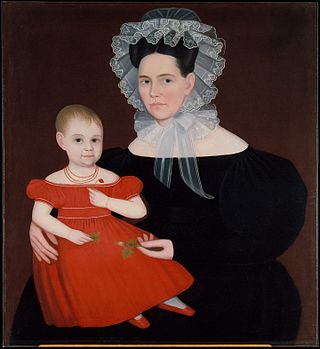
Ammi Phillips was a prolific American itinerant portrait painter active from the mid 1810s to the early 1860s in Connecticut, Massachusetts, and New York. His artwork is identified as folk art, primitive art, provincial art, and itinerant art without consensus among scholars, pointing to the enigmatic nature of his work and life. He is attributed to over eight hundred paintings, although only eleven are signed. While his paintings are formulaic in nature, Phillips paintings were under constant construction, evolving as he added or discarded what he found successful, while taking care to add personal details that spoke to the identity of those who hired him. He is most famous for his portraits of children in red, although children only account for ten percent of his entire body of work. The most well known of this series, Girl in Red Dress with Cat and Dog, would be sold for one million dollars, a first for folk art. His paintings hung mostly unidentified, spare for some recognition in the collections like those of Edward Duff Balken, for decades until his oeuvre was reconstructed by Barbara Holdridge and Larry Holdridge, collectors and students of American folk art, with the support of the art historian Mary Black. Ammi Phillip's body of work was expanded upon their discovery that the mysterious paintings of a "Kent Limner" and "Border Limner" were indeed his.

Joseph Henry Sharp was an American painter and a founding member of the Taos Society of Artists, of which he is considered the "Spiritual Father". Sharp was one of the earliest European-American artists to visit Taos, New Mexico, which he saw in 1893 with artist John Hauser. He painted American Indian portraits and cultural life, as well as Western landscapes. President Theodore Roosevelt commissioned him to paint the portraits of 200 Native American warriors who survived the Battle of the Little Bighorn. While working on this project, Sharp lived on land of the Crow Agency, Montana, where he built Absarokee Hut in 1905. Boosted by his sale of 80 paintings to Phoebe Hearst, Sharp quit teaching and began to paint full-time.

John Mix Stanley was an artist-explorer, an American painter of landscapes, and Native American portraits and tribal life. Born in the Finger Lakes region of New York, he started painting signs and portraits as a young man. In 1842 he traveled to the American West to paint Native American life. In 1846 he exhibited a gallery of 85 of his paintings in Cincinnati and Louisville. During the Mexican–American War, he joined Colonel Stephen Watts Kearney's expedition to California and painted accounts of the campaign, as well as aspects of the Oregon Territory.

Lilly Martin Spencer was one of the most popular and widely reproduced American female genre painters in the mid-nineteenth century. She primarily painted domestic scenes, paintings of women and children in a warm happy atmosphere, although over the course of her career she would also come to paint works of varying style and subject matter, including the portraits of famous individuals such as suffragist Elizabeth Cady Stanton. Although she did have an audience for her work, Spencer had difficulties earning a living as a professional painter and faced financial trouble for much of her adult life.
Edward Charles Volkert (1871–1935) was an American Impressionist artist best known for his colorful and richly painted impressionist landscapes. His trademark subject was that of cattle and plowmen. His style is noted for its impressionist use of light, applied in small dots of paint, while maintaining an interest in the true forms and colors of his subject matter. He has been referred to as America's cattle painter extraordinaire".
Daryl Urig is an American illustrator and painter residing in Harrison, Ohio, his work has been shown all over the United States. He also owns his own business, an online media arts company.
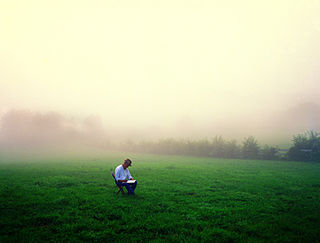
Eugene "Bud" Leake pronounced "Leaky" was a landscape painter and president of the Maryland Institute College of Art. His work was characterized by a consistent commitment to the depiction of the landscape, not following ever-changing trends of contemporary art in the 20th century. In an October 2000 Baltimore Sun article Glenn McNatt wrote that, "For the past quarter century, Leake has been recording that landscape in all its moods and seasons, from riotous sun-drenched spring mornings to the magical glow of autumnal sunsets. His paintings are imbued with an unmistakable sense of place that only one who has lived in and loved the surrounding landscape can create."
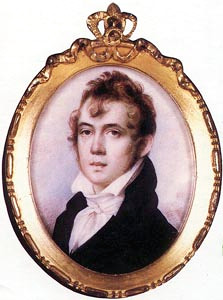
Anson Dickinson was an American painter of miniature portraits who achieved fame during his lifetime, producing a very large number of works, but who is now largely forgotten.
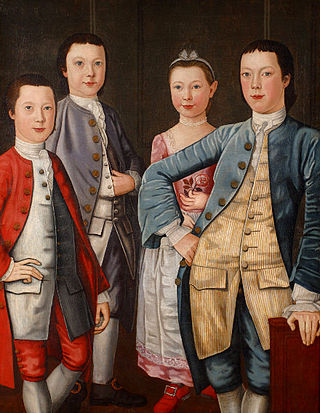
John Durand was a colonial American portraitist. With John Mare, Abraham Delanoy, and Lawrence Kilburn, he was one of a number of portraitists living and working in New York City during the 1760s.

Joseph Mason was an American artist who worked as an assistant to John James Audubon, painting uncredited plant-life backgrounds for some 50 of his bird studies for the book The Birds of America.

Addison Thomas Millar was an American painter and artist; best known for his genre scenes and Orientalist paintings.
Noah North was an itinerant American portrait painter in the folk art tradition.